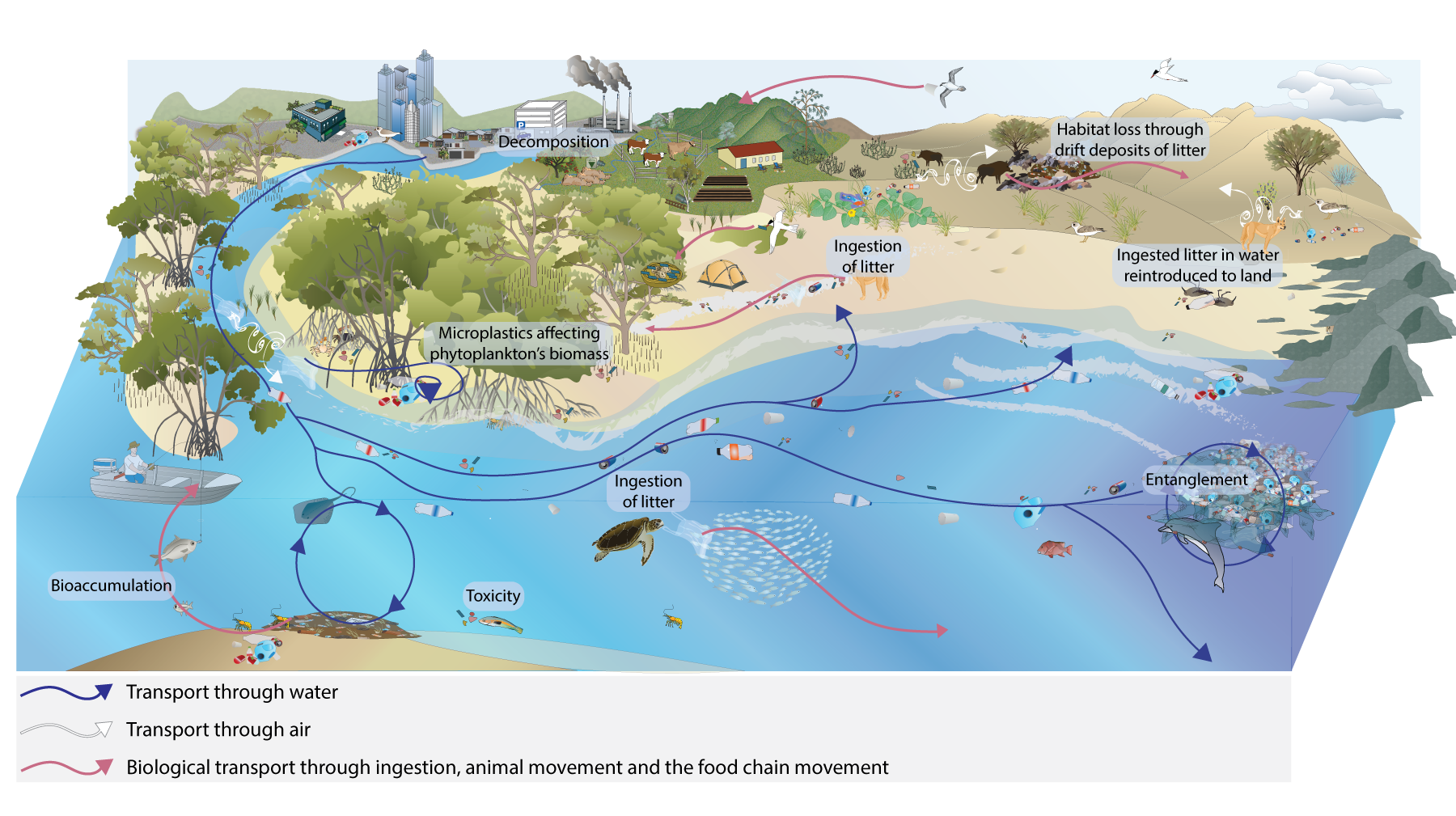|
|
Living things (biota)Living things (biota) Living things (biota)When living things ingest waste material, they can become a waste sink. Many studies have focused on the impact of plastic and other waste on living things. However, the probability and extent of waste ingested by living things is not well understood. Research by Grant et al (2021) has found that seabirds are a transfer mechanism for marine-derived plastics. They ingest at sea and reintroduce items back into the terrestrial environment, thus making seabird colonies a sink for plastic debris[2]. One study team has suggested that 100,000 tonnes of plastic, including nanoplastics, could be inside animals at any point in time[4]. The nature of micro- and nanoplastics and their harmful consequences has drawn significant attention in recent years in the context of environmental protection. A review paper released in February 2021 investigated this evolving subject, focusing on the documented human health and marine environment impacts of micro- and nanoplastics and including a discussion of the economic challenges and strategies to mitigate this waste problem[1]. Seabirds were found to be a transfer mechanism for marine-derived plastics. They ingest at sea and reintroduce items back into the terrestrial environment, thus making seabird colonies a sink for plastic debris[2]. Oysters are a good reference species for investigations into microplastics, given the fact that they filter-feed, and can be a good indicator of the presence of environmental contamination. A review of global literature showed that around 94% of oysters had microplastic contamination. Wild-caught oysters also had higher contamination than aquaculture raised specimens (more than double the contamination), possibly due to cleaner waters in aquaculture farms[5]. A study found that microplastics affected the biomass of phytoplankton species. The impact varied depending on location and season, and some species had greater tolerance to the chemicals[3]. The extent and impact of plastics ingested by living things requires further study. References
Last updated: 23 April 2025 This page should be cited as: Department of Environment, Science and Innovation, Queensland (2025) Living things (biota), WetlandInfo website, accessed 8 May 2025. Available at: https://wetlandinfo.des.qld.gov.au/wetlands/management/pressures/litter-illegal-dumping/sinks/biota/ |

 — Department of the Environment, Tourism, Science and Innovation
— Department of the Environment, Tourism, Science and Innovation

